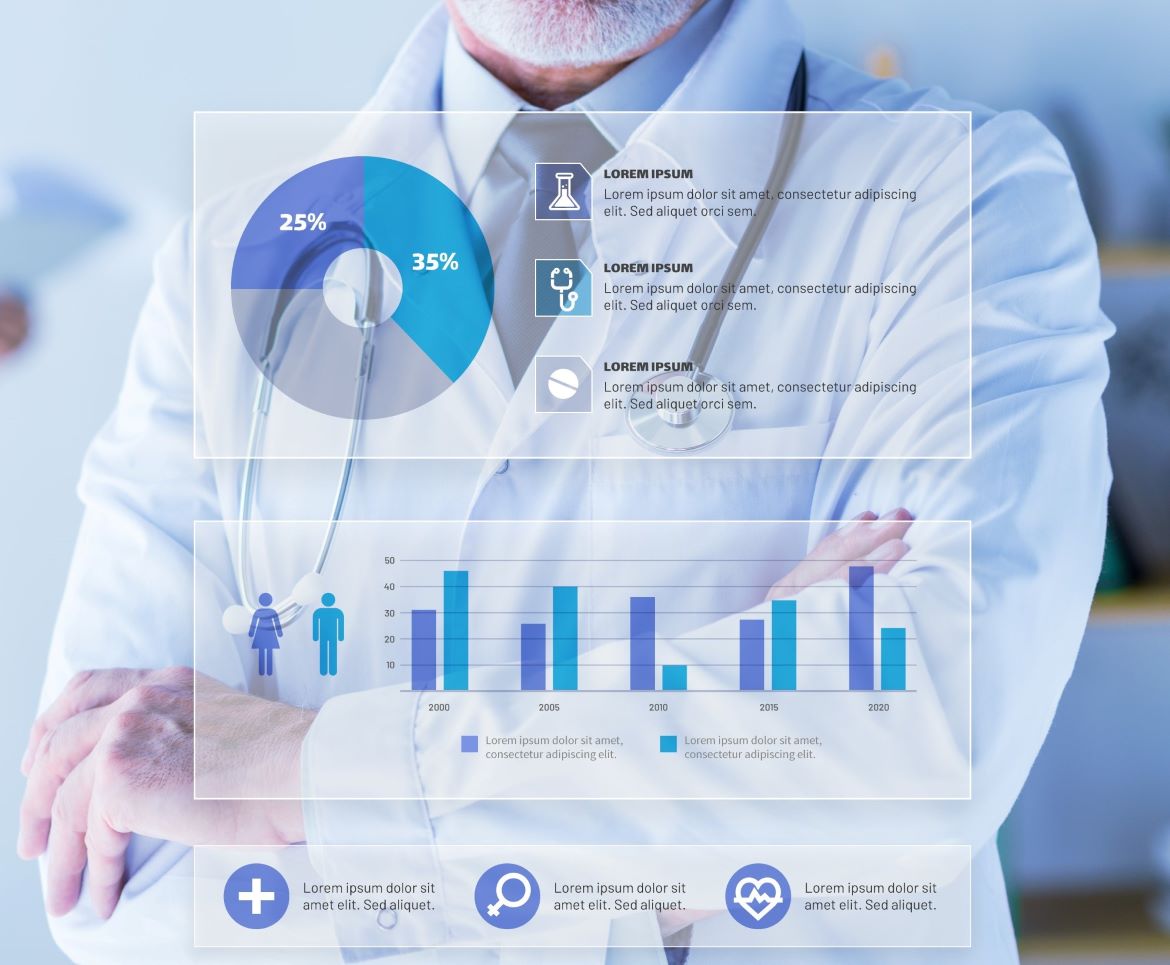
Businesses that take a data-driven approach are rising above the competition, and healthcare organizations are no exception. A study by Accenture found that the number of successful enterprises taking a data-driven approach rose from 30% to 70% from 2008 to 2021. It also found that these companies are generating more revenue per employee than their competitors.
Data-driven technologies and products have already shown promising results in improving the quality of patient care. These products use Artificial Intelligence (AI) and Machine Learning (ML) to collect, analyze, and organize patient data. They can improve patient healthcare delivery, streamline electronic health records (EHR), improve predictive models, and expand the scope of care and communication throughout the healthcare sector.
Data-driven healthcare organizations focusing on a data-driven approach to digital transformation and patient care will be more likely to improve patient outcomes, reduce costs, and optimize care delivery. Using data and analytics to identify trends and patterns can help them make informed decisions about patient care, resource allocation, and process improvement. Of course, any data-driven organization must develop infrastructure to move data quickly and safely from isolated ‘data silos’ to composable ‘data warehouses’.

One of the goals of digital transformation is for healthcare organizations to become more data-driven, allowing critical decisions, actions, and processes to be strongly influenced by data analytics and insights rather than human intuition. To achieve this goal, healthcare enterprises must architect and promote a “data culture” within their organizational structure and operations.
Data cultures shift data ownership from a few specialists to a broader community of relevant parties. It democratizes access and use of data, providing access to everyone in the organization to view and analyze essential data. If implemented correctly, a data-driven culture can drive more innovative solutions and products, improve patient care, and reduce complexities throughout the healthcare sector.
Data-driven solutions and products focus on automating data collection to streamline both minor tasks and help innovate major procedures. For example, automated data collection procedures can catalog (EHR), reducing the workload of staff tasked with overseeing outdated manual documentation processes. It can also organize administrative data such as appointment scheduling, ward transfers, and room placement. These procedures can be used to track and analyze the patient journey from intake to discharge, helping to find areas for improvement in healthcare facilities. All of these solutions contribute to a data-centric healthcare system that reduces waste, increases efficiency and profitability, and puts the focus on better patient outcomes.

A data-driven healthcare approach can be implemented using the right tools and products. For the purposes of expanding operational efficiency, lowering costs, and improving patient outcomes, data-centric tools and solutions must be equipped to use data analytics. In order to acquire insights into patient health, disease patterns, and treatment efficacy, they contribute to an architecture that is capable of gathering, processing, and interpreting enormous amounts of healthcare data from sources like wearable devices, clinical trials, and electronic medical records.
These solutions allow healthcare professionals to make better-informed decisions about patient care and treatment strategies, which improves patient outcomes and raises the standard of care. A data-driven strategy can also assist identify problem areas and enhance healthcare operations, leading to more productivity and lower costs. The following are keys tools and solutions that drive a data-centric culture and data-driven digital transformation.

To successfully implement new data transformation infrastructure, healthcare organizations must focus on implementing and promoting valuable ‘data products.’ Organizations must conduct an evaluation of existing capabilities and systems and encouraging a shift in the organization's culture. This evaluation will give them valuable data to help users and staff to navigate the transition from ‘data as a by-product’ to ‘data as a product.’ Data is then used to improve patient care and outcomes, streamline administrative processes, and make medical procedures more efficient and less error-prone. Technically, this entails domain-driven design, distributing domain-specific data to consumers, federated ownership, use-case-based transformations, and data domain owners responsible for KPIs/SLAs of data products.
Building a data-driven product involves some key factors that developers must prioritize. First, they should consider how to optimize the way data uses impact the central platform. They must also scale data architectures by creating more compact, domain-oriented segments. The architecture should be decentralized to help organizations avoid monolithic data infrastructure. All the data movement should be documented in a data ledger that captures key markers and events. Finally, they should focus on creating streaming-centric pipelines to replace legacy batch-type tooling, handle real-time events, and provide more timely analytics.
To satisfy evolving organizational and process requirements, centralized data platform designs and data lakes must scale better. Otherwise, it could slow down and complicate the delivery of insights. Improved business agility, scalability, and speed to data value are all advantages. This allows for deploying data infrastructure as a service, enabling scalability and lowering operating and storage costs. It also offers greater autonomy to domain experts and decentralizes monolithic data platforms.
Decentralized data from several domains and sources is called ‘data mesh.’ With a self-serve, domain-oriented structure, this particular data platform architecture is intended to embrace the pervasive nature of data in companies. By adopting a mentality that produces data products from specialized teams and enables data-driven business decisions, enterprises can be more agile and productive. Lowering the lead time to build a new data product is one of the success criteria for self-serve data infrastructure.
Over the past ten years, AI has become more well-known as companies realize its enormous potential in addressing a range of commercial difficulties. This includes enabling individualized medication and care, enhancing customer service with chatbots, and streamlining supply chains. They also include identifying irregularities in financial systems to prevent fraud. Designing, creating, and putting into practise AI systems that prioritise open decision-making while protecting patient safety, privacy, and trust are all part of responsible AI use in healthcare. Responsible AI can assist medical professionals in utilising the enormous volumes of healthcare data at their disposal to spot trends and develop more precise diagnoses and treatment strategies. Additionally, it can help in the development of tailored medication and enhance patient outcomes.
However, this multifaceted tool could have far-reaching unintended consequences if misused or carried out with insufficient discipline. In order to prevent unintended repercussions that could damage patients, healthcare practitioners must take proactive measures to guarantee that AI systems are created ethically and responsibly. While keeping ethical standards, ensuring patient trust, and upholding efficiency gains, the proper use of AI in healthcare can enhance patient outcomes.
Data-driven culture and approaches are going nowhere fast. Experts predict annual data volume growth to rise by 23% until 2025, making it even more urgent for healthcare companies to start architecting data-driven solutions. Healthcare professionals can learn more about patient health, disease trends, and treatment effectiveness by utilising data analytics and technology. This knowledge can help them make better decisions and deliver better patient care. To protect patient safety, privacy, and trust, it is crucial to make sure that data is gathered, examined, and interpreted in an ethical and responsible manner.
Healthcare organisations must invest in data infrastructure, hire qualified data analysts and scientists, and put good data governance practises into place if they are to become data-driven. Also, it is essential to give healthcare personnel continual education and training to make sure they are prepared to use data effectively in their professions. Healthcare professionals may give efficient, high-quality care to patients by using a data-driven strategy, thereby improving the health outcomes of entire communities.